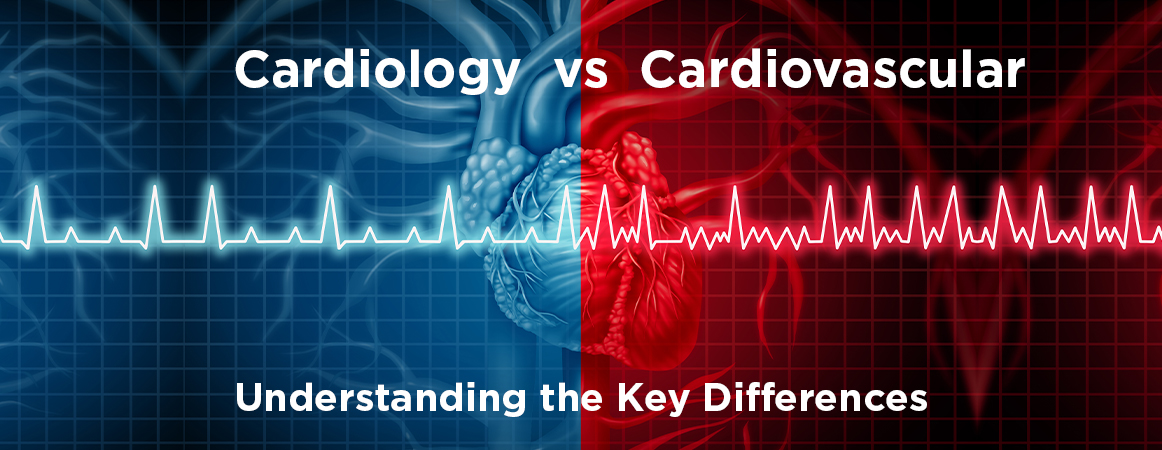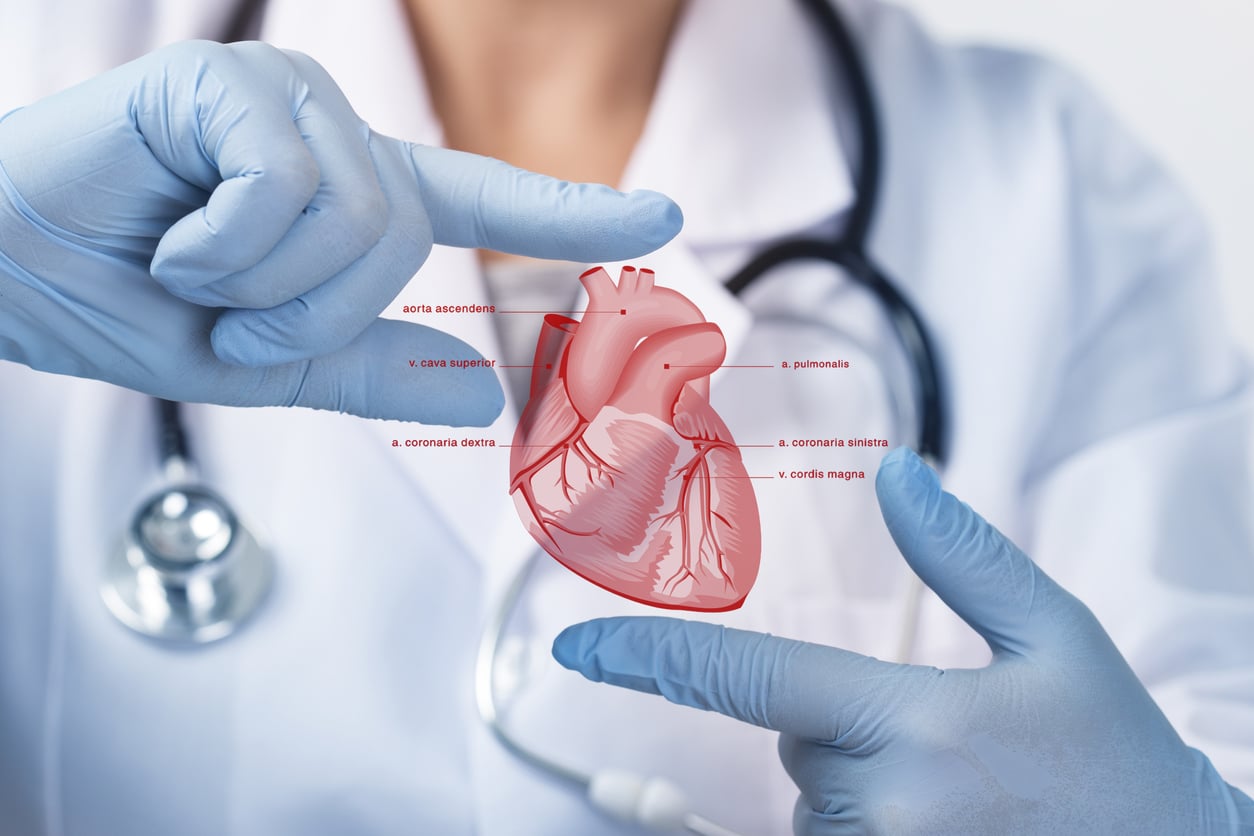Recognizing the Importance of Cardiology in Modern Health Care Providers
Cardiology plays an essential function in contemporary health care, particularly as heart problem proceeds to be the leading reason for mortality worldwide. Advances in diagnostics and treatment have actually transformed client treatment, enabling earlier interventions and improved results. The change in the direction of preventive cardiology empowers individuals to manage their health proactively. As innovation proceeds to progress, the integration of innovative options may further redefine cardiology's effect on public wellness, prompting a better evaluation of arising trends and their implications.
The Frequency of Heart Condition and Its Influence On Public Health
Although heart disease stays the leading cause of fatality worldwide, its effect expands far beyond specific patients to impact public health systems and economic situations. The high prevalence of heart problem positions a substantial stress on healthcare resources, demanding enhanced funding for recovery, therapy, and prevention programs. Public wellness initiatives have to attend to threat elements such as weight problems, smoking, and sedentary lifestyles, which add greatly to the climbing incidence of heart conditions.Moreover, the economic worry connected with heart condition is tremendous, incorporating not just straight clinical expenses however additionally indirect expenditures connected to lost performance and early mortality. Areas face challenges in taking care of these prices, typically bring about variations in health care gain access to and outcomes. As the population ages and lifestyle-related threats remain to intensify, the necessity for efficient cardiology treatments ends up being critical. Attending to heart illness is not just a matter of private health but additionally a crucial public wellness top priority.
Advances in Heart Diagnostics and Imaging Techniques
Current improvements in heart diagnostics and imaging methods have changed the field of cardiology, improving the capacity to identify and check cardiovascular disease. Techniques such as heart MRI, CT angiography, and echocardiography have actually become increasingly advanced, offering detailed pictures of cardiac frameworks and functions. These techniques permit the early identification of problems like coronary artery illness, cardiac arrest, and valvular disorders.Moreover, advancements in non-invasive diagnostics, such as wearable modern technology and remote monitoring tools, have equipped patients and doctor. These devices promote real-time tracking of heart rhythms and other vital indicators, resulting in prompt interventions. In addition, fabricated knowledge is being incorporated into imaging analysis, improving accuracy and efficiency in diagnosis.
Innovations in Treatment Choices for Heart Conditions
Recent innovations in cardiology have actually led to significant innovations in therapy alternatives for heart disease. These include innovative medical strategies that enhance step-by-step results and emerging medications that use new opportunities for treatment. As the area advances, these developments play an important function in boosting person care and end results.
Advanced Surgical Techniques
Technologies in medical strategies have transformed the landscape of cardiology, offering new expect patients with heart disease. Minimally invasive treatments, such as catheter-based treatments, have significantly decreased recuperation times and health center stays. Methods like robotic-assisted surgery improve accuracy, enabling cosmetic surgeons to navigate complex anatomical frameworks with better accuracy. Innovations in imaging technology assist in real-time visualization during treatments, boosting results. Transcatheter aortic shutoff replacement (TAVR) exhibits a development in dealing with aortic stenosis, making it possible for valve replacement without open-heart surgery. Furthermore, hybrid strategies that incorporate medical and catheter-based methods offer customized services for various cardiac issues. These advanced medical methods not only enhance patient safety but also expand treatment alternatives, highlighting the important duty of development in modern cardiology methods.
Emerging Medicines and Treatments
As the landscape of cardiology remains to develop, arising drugs and treatments play an essential function in improving therapy options for heart disease. Developments such as novel anticoagulants and advanced lipid-lowering agents have transformed the monitoring of heart diseases, substantially minimizing patient morbidity and death. Furthermore, the development of genetics treatments and regenerative medicine uses appealing methods for dealing with conditions formerly considered permanent. Clinical trials are continually revealing the effectiveness of these therapies, pressing the borders of typical treatments. The combination of electronic health and wellness modern technologies helps with individualized medicine, enabling for tailored treatment plans based on hereditary and way of living elements. Jointly, these developments emphasize the vibrant nature of cardiology, improving individual outcomes and redefining standards of care in modern medical care.
The Function of Preventive Cardiology in Client Treatment
Preventive cardiology plays an essential role in patient treatment by concentrating on the identification of danger elements that contribute to heart problem. Via way of living modification approaches and very early discovery strategies, medical care carriers can successfully reduce the occurrence of cardio events - Cardiologist near me. This positive approach not only improves individual results yet additionally promotes long-lasting wellness
Danger Aspect Identification
While cardiovascular diseases remain a leading source of morbidity and mortality worldwide, effective danger element recognition serves as a foundation of precautionary cardiology. Recognizing danger variables such as high blood pressure, family members, diabetes mellitus, and hyperlipidemia history is necessary for early treatment. Medical care professionals utilize various screening methods to evaluate these variables, permitting tailored safety nets. In addition, recognizing an individual's way of living selections, such as cigarette smoking and physical lack of exercise, better educates threat assessments. This complete analysis makes it possible for clinicians to create personalized treatment plans focused on mitigating threats. By focusing on threat element identification, healthcare systems can boost person outcomes and minimize the total worry of heart diseases, ultimately adding to enhanced public health approaches and source allowance.
Lifestyle Adjustment Approaches
A plethora of studies highlights the critical function of way of life alteration techniques in minimizing cardio disease threat. These techniques incorporate dietary modifications, boosted physical activity, smoking cigarettes cessation, and weight monitoring. By taking on a heart-healthy diet abundant in fruits, veggies, entire grains, and lean healthy proteins, individuals can reduce cholesterol degrees and blood pressure. Routine exercise strengthens the heart and enhances total cardiovascular health. Furthermore, giving up smoking substantially decreases the threat of heart illness and boosts recovery rates for those with status quo. Weight monitoring even more adds to cardio health by alleviating other risk factors such as diabetes and high blood pressure. Applying these lifestyle changes not just advertises specific health yet also functions as a foundation of preventative cardiology in individual treatment.
Very Early Detection Strategies
Way of living alterations significantly add to minimizing Website cardio illness dangers, yet they are most efficient when combined with very early discovery methods. Preventative cardiology highlights the value of recognizing possible heart problems prior to they intensify right into major problems. Strategies such as blood pressure surveillance, cholesterol testing, and advanced imaging technologies like echocardiograms play critical functions in reviewing cardio health. Biomarkers and genetic screening additionally enhance the precision of very early discovery, permitting for tailored precautionary techniques. Regular cardiac risk assessments equip doctor to intervene proactively, possibly protecting against heart strikes and strokes (Cardiology Jupiter). By integrating these very early discovery approaches into routine treatment, individuals can profit from prompt way of living interventions and targeted therapies, inevitably improving outcomes and enhancing quality of life
Integrating Technology Into Cardiology Practices
As innovations in innovation remain to improve different fields, the combination of ingenious tools and systems right into cardiology methods has actually become crucial for improving person care and results. Telemedicine platforms allow cardiologists to keep an eye on individuals from another location, enhancing access to care while minimizing the problem on medical care facilities. Wearable tools, such as smartwatches, make it possible for continual heart rate tracking, informing both doctors and clients to possible problems in real-time. In addition, expert system (AI) is being utilized to examine huge amounts of heart data, aiding in very early medical diagnosis and individualized therapy strategies. Advanced imaging strategies, including 3D echocardiography, improve visualization of heart frameworks, bring about a lot more precise interventions. Electronic health and wellness documents (EHRs) streamline person information monitoring, guaranteeing that cardiologists have prompt access to important data. With each other, these technical developments are changing cardiology, advertising positive monitoring and enhanced health and wellness outcomes for clients with cardiovascular problems.
The Relevance of Patient Education and Involvement
Client education and check my reference learning and engagement play an essential function in the monitoring of cardio health. By outfitting clients with expertise concerning their conditions, treatment alternatives, and way of life adjustments, doctor equip people to take an energetic role in their care. This proactive strategy can result in enhanced adherence to recommended medicines, nutritional adjustments, and workout programs, ultimately reducing the risk of complications.Engagement likewise fosters a strong patient-provider partnership, encouraging open interaction and count on. When people really feel informed and involved, they are most likely to voice problems and ask questions, which can cause much better clinical outcomes. In addition, instructional resources, such as workshops or digital platforms, can boost understanding and advertise self-management methods. In general, focusing on patient education and learning and involvement is vital for improving cardio health, boosting lifestyle, and lowering healthcare prices related to cardio conditions.
Future Fads in Cardiology and Their Prospective Effect

Regularly Asked Concerns
What Way Of Living Changes Can Minimize Cardiovascular Disease Danger?
The existing inquiry addresses way of living adjustments that can substantially decrease cardiovascular disease threat. Cardiology Jupiter. Adopting a balanced diet, taking part in routine exercise, preserving a healthy and balanced weight, taking care of anxiety, and avoiding cigarette can notably enhance cardio health
Just How Can I Identify Very Early Indications of Heart Problems?
Acknowledging early browse this site signs of heart troubles involves tracking signs and symptoms such as upper body discomfort, lack of breath, exhaustion, and irregular heartbeat. Timely recognition of these signs can prompt needed clinical analysis and intervention for much better results.
What Are the Distinctions Between Cardiologists and Cardiac Surgeons?
The differences between cardiologists and heart surgeons hinge on their functions; cardiologists mostly handle and identify heart disease via non-invasive approaches, while cardiac specialists execute surgeries to fix architectural heart problems. Each plays an essential, unique role.

How Often Should I Obtain My Heart Wellness Checked?
The frequency of heart checkup varies based on specific danger elements. Normally, grownups need to undergo evaluations every one to two years, while those with present conditions might require more frequent assessments as suggested by medical care specialists.
What Role Does Genetics Play in Heart Condition Danger?
Genetics greatly influences heart problem threat, with domestic patterns showing inherited problems. Details genes can predispose people to hypertension, cholesterol concerns, and other cardio troubles, highlighting the importance of genetic screening in assessing heart health and wellness. Heart illness stays the leading cause of fatality globally, its impact extends much past specific people to affect public health systems and economies. Public health and wellness campaigns must attend to danger aspects such as obesity, smoking, and less active way of lives, which contribute substantially to the climbing occurrence of heart conditions.Moreover, the economic burden associated with heart disease is tremendous, including not just direct medical expenses yet likewise indirect expenditures related to lost performance and early mortality. Preventive cardiology plays an important function in person treatment by focusing on the recognition of danger factors that add to heart illness. Artificial intelligence (AI) and equipment knowing are enhancing diagnostics and person monitoring, allowing early discovery of heart diseases. The distinctions in between cardiologists and heart doctors lie in their functions; cardiologists primarily manage and identify heart problems with non-invasive techniques, while cardiac specialists perform medical procedures to correct structural heart issues.